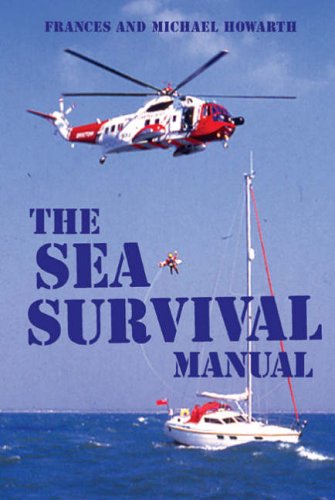
When we wrote our book the Sea Survival Manual we warned about the dangers of falling into very cold water and we explained how doing so might kill you.
The Sea Survival Manual is the definitive book on the subject for anyone aboard a yacht of any size. It is aimed at the yachtsman or seafarer who is likely to proceed to sea out of the sight of land, whether for pleasure or professional reasons.
Now new Research explains how to survive an accidental fall in cold water
It has been published by a lecturer in Physical Activity and Health at Leeds Trinity University.
Dr Martin Barwood’s research, recently published in the Physiology and Behavior journal, focuses on the cold water shock response, which can cause sudden death when people accidentally fall into cold water.
In the waters around the UK, water temperatures average 11-13ºC, which is cold enough to cause sudden death – even for strong swimmers and within only a few metres of land.
Dr Barwood said: “Falling in to cold water is a life-threatening event that can cause otherwise healthy individuals to drown in just a few minutes.
The likely cause is the cold shock response, which is triggered by rapid skin cooling when we fall in to the cold water.
The result is an increase in cardiovascular strain and, most critically, uncontrollable hyperventilation which temporarily reduces our ability to defend against water entering the mouth and, in the worst case scenario, the lungs.”
His advice is to:
- Float
- Keep your mouth above water level, and
- Wait for the cold shock to subside.
Dr Barwood’s research, which focuses on how levels of anxiety can increase or reduce the cold shock response, has provided some of the evidence base for the National Water Safety advice in the UK and is central to the Royal National Lifeboat Institute’s campaign Respect the Water.
The studies show that the cold shock has a significant psychological component and to “keep calm” might actually limit the magnitude and duration of the response.
In an emergency, this may help reduce the risk of drowning.
Death by drowning is a leading cause of accidental death in adults and children in the UK with up to 300 deaths evident in 2016 according to the Royal Society for the Prevention of Accidents.
Worldwide more than 370,000 lives were lost to drowning in 2014 according to the World Health Organisation.
Dr Barwood added: “We know cold shock subsides two to three minutes after water entry and after that you have a better chance to execute your survival strategy.
Most people who fall in to cold water are clothed and we know that air trapped between clothing layers helps buoyancy in the short term.
“Cold shock is an integrated psychophysiological response that we might have greater control over than previously thought. Our findings have changed the way we think about cold shock.”
